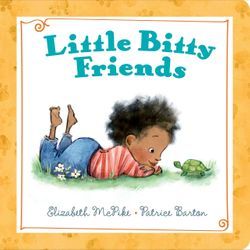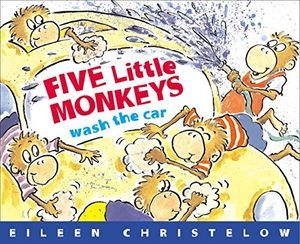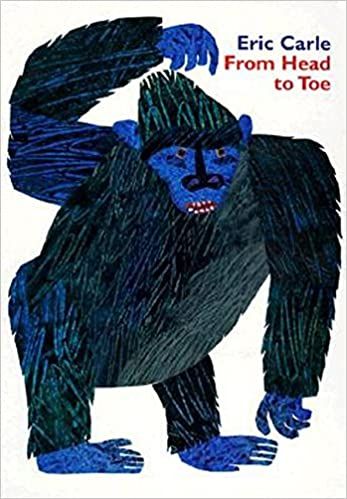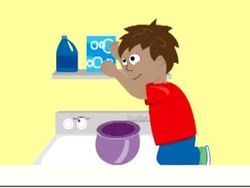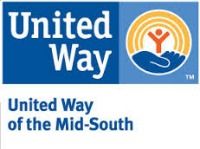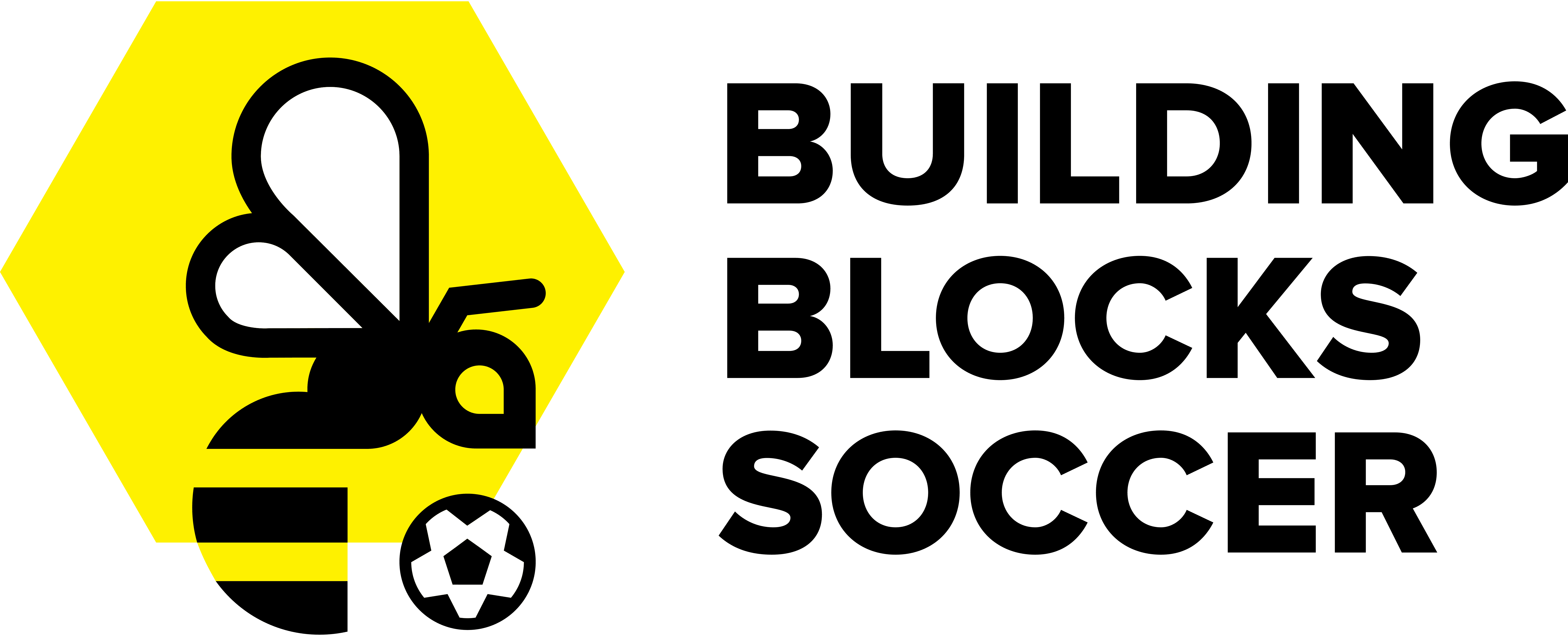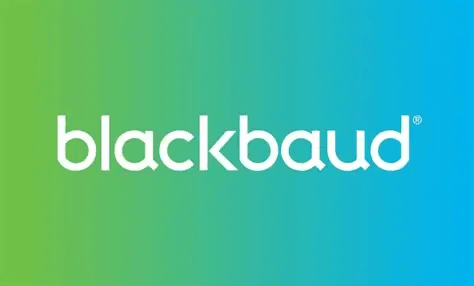MOSD Student Activities April 6 - 10
Each week that MOSD is closed due to the COVID-19 pandemic our professionals are providing activities for students and their families to do at home in addition to their scheduled classroom times and teletherapy!
Feel free to follow along and do these activities with your family!
Monday, April 6
Sidewalk Chalk/Spring Drawings
Materials
- Sidewalk Chalk OR
- Crayons/markers/colored pencils
- Paper
Steps
- Go outside on a sunny day and draw Spring pictures using sidewalk chalk
- Try to have your child think of and draw as many Spring items as they can (kite, flowers, Easter Bunny, rainbow, etc.)
- Give your child clues for Spring items o I’m thinking of something up in the sky with lots of colors
- What can you fly in the sky on a windy Spring day?
- What brings us Easter eggs? It goes hop, hop, hop.
- Any independent ideas from your child are great- even if they aren’t related to Spring.
- If you don’t have sidewalk chalk- that’s OK! You can do the same thing with crayons and paper.
- If it is a nice day, you can still draw your Spring pictures outside
Language Targets
- 1-2 Word Targets
- Bunny, hop hop hop
- Purple flower
- Easter egg
- Cloudy day
- 3-5 Word Targets
- That’s the Easter Bunny
- The kite flies high
- I want a pink flower
- Rainbows are so pretty
- 6+ Word Targets
- Encourage higher level thinking by asking questions such as ‘Where does rain come from?’ ‘What does a flower need to grow?’ ‘What could we do/wear on a sunny day/rainy day?’ Take what your child says to model correct language structures and to add higher level vocabulary.
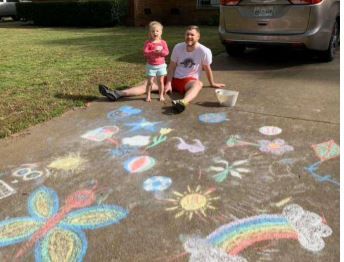
Book: I Ain't Gonna Paint No More by Karen Beaumont
Read Along HERE
Tuesday, April 7
Indoor Camp Out
Materials
- Tent
- Something comfy to sleep on
- Flashlights
- S’mores
- Paper towel rolls
- Orange or yellow tissue/construction paper
Language Targets
- 1-2 word utterances
- Blue tent (yellow tent, etc.)
- Tall tent
- Big tent
- Dark tent
- Open/close
- Inside house
- 3-5 word utterances
- The tent is big!
- Go inside the tent
- Let’s sit in the tent
- I want a pillow
- I want to lay down
- Look at the light!
- The fire is hot!
- For children with more advanced language
- Encourage higher level thinking by asking questions such as “Why do you think…. ?” , “What would happen if…?”, “What would you do if..”.etc. Take what your child says to model correct language structures and to add higher level vocabulary.
Indoor Camp Out Examples
- Set up tent
- If you have a room big enough for an outdoor camping tent, set it up inside. If you don’t, create one by draping a sheet or blanket over chairs and couches as if you were setting up a fort. Fill the inside with sleeping bags, pillows, blankets, and anything else you might need to sleep
- Build a campfire
- Before your camp out, save your old paper towel rolls. The day of the camp out place them around the house. Then during your camp out, have your family go find the “firewood” (paper towel rolls) to build the fire. Once they’ve gathered all of the “firewood,” place them in a pile in front of your tent and use the tissue paper to create flames on top of the wood
- S’mores
- If your kids are older, you can also have them roast marshmallows over tea lights or small candles. Or just make a s’more themed dessert such as cupcakes or s’mores bars
- Grab a flashlight and do some fun shadow activities or some reading time in the tent
Book: Little Bitty Friends by Elizabeth McPike
Read Along HERE
Wednesday, April 8
Car Wash
Materials
- Car or other type of vehicle (preferably real, but toy can work) It would definitely be fun if they have a battery operated one of their own that they love to ride
- Bucket, liquid soap, sponge, brush, old rags, water hose
Steps
- Let your child help gather the things that will be needed to wash a car o Identify each item and discuss what it will be used for.
- Go outside and wash that dirty car! o Discuss how to make the bubbles in the bucket. Squirt the soap into the bucket and add the water. Wow! Look at all the bubbles! o Have your child use a sponge, brush, and rag (or whatever you are using) to see if one cleans better than the other
- Ask higher level questions such as: Do you think we should start at the top of the car or at the bottom? Do you think the car will get cleaner if there are more bubbles? Should we spray the car before or after we put on the soap? Hmm, maybe both. Why?
Language Targets
- 1-2 Word Targets
- Squirt (the) soap
- Spray (the) water
- Wash! Wash!
- Dirty car
- All done
- 3-5 Word Targets
- I want the brush.
- I want to wash.
- Look at the bubbles!
- The car is dirty.
- 6+ Word Targets
- May I please spray the water?
- I want to wash with the brush, please.
- The bubbles are on the car.
- Look, the car is shiny and clean!
Book: Five Little Monkeys Wash the Car by Eileen Christelow
Read Along HERE
Thursday, April 9
Obstacle Course
An obstacle course can provide a great outlet to get moving, particularly on a rainy day. Weather permitting you can also have an outdoor obstacle course.
Materials
Use your imagination! Look around the house for items you can use as obstacles. Some items might include:
- Tape to make lines to follow (straight lines, zig-zags, a square to jump, hop, or step into)
- A plank of wood for a balance beam
- Small ball and a spoon to carry it in
- Daddy’s or Mommy’s shoes to walk in for part of the course
- Sheet to drape across rows of chairs to create a tunnel (or a tunnel if you have one)
- A laundry basket and/or empty box to climb in or to throw a ball into
- Pillows to jump on or leapfrog over
- Several Stuffed Animals to jump over (They are soft in case they miss!)
- Pool Noodle to jump to step back and forth over
- Jump rope or rope to walk across like a tightrope
- A pillowcase to climb into and jump (like a sack race)
- Bathroom steps or stool to climb up on
- A hula hoop
- A large beach ball
- Cups to line up and weave through
- Paper plates to walk around or step on (balance on one foot on a paper plate or stool)
- Coffee table and/or chairs to crawl under or climb over
- Exercise trampoline to jump on
Steps
- Set up your course keeping in mind different skills and vocabulary that would be appropriate for your child.
- Include preposition such as: up, down, in, into, on, off, over, under, around, beside, through, in front of, behind, above, below, and across
- Use numbers. “Throw three balls into the basket.” “Jump backward two times.” For older children, they can pick a number, or number word card from a pile of cards
- Incorporate letters and words. At a point in the obstacle course you could have some letters or sight words. Have your child find a letter and make the sound, or find a particular word.
- Be sure to include a variety of action words such as: clap, wiggle, stomp, jump, twist, dance, tip-toe, run, hop, squat, bounce, throw, toss, crawl, etc.
- Set up your obstacle course and then go through the course to demonstrate to your child what they are supposed to do.
- To encourage team work you can work together with your child or they can work with a sibling. Wearing a blindfold, have your child guide you through the obstacle course. Siblings can take turns leading each other through the course. They may need a little help and your supervision of course! It is an excellent way for your children to learn to cooperate and work with each other.
- If you take the obstacle course outside you can use sidewalk chalk to draw paths to follow (zig-zags, loops, etc), alphabet letters or words to step on and name, hop-scotch with numbers to jump on and identify, etc.
- Next time have your child help come up with ideas and construct his/her own obstacle course.
Book: From Head to Toe by Eric Carle
Read Along HERE
Friday, April 3
Bubbles
Materials
- Bubble solution
- Various items to dip in the bubble solution—some that will make bubbles (bubble wands, slotted spoons) and some that will not (a block, a crayon).
Steps
- You could introduce the activity by having a bag with bubble solution and items to dip in the solution inside. Give your child hints about what is inside the bag, like “It’s something we usually play with outside,” or “It is in a bottle.” Let them feel the item through the bag.
- Play! Blow lots of bubbles! Try some of the items that will not make bubbles. See if your child can guess which items will make bubbles, and which will not, and sort them into stacks. Decide what makes the items that will blow bubbles the same (they all have holes in them).
Language Targets
- 1-2 word targets
- Bubble Pop!
- My turn!
- Blow More
- More bubbles.
- 3-5 word targets
- I want more bubbles.
- Pop the bubbles.
- We blew 4 bubbles.
- 6+ word targets
- The bubble popped on my nose/finger/elbow…
- A block will not make bubbles.
Book: Bubbles by Real E Fun Books
Read Along HERE


